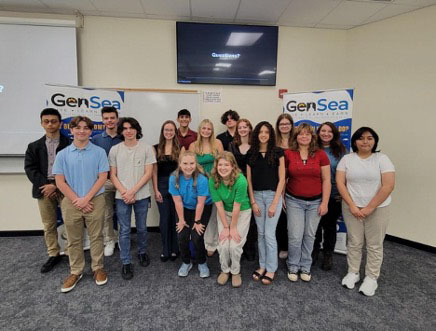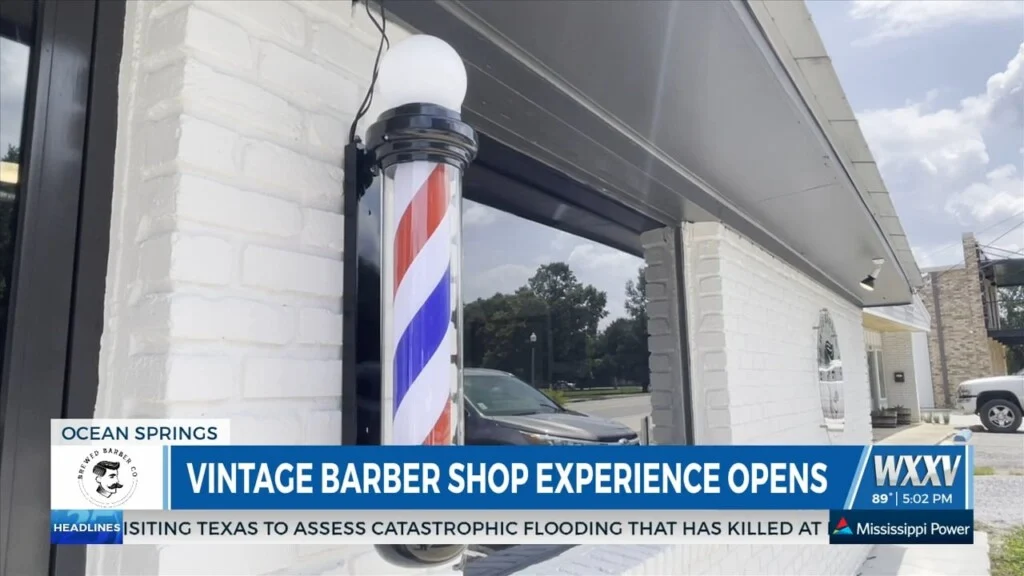GenSea Blue Economy interns recently presented their final projects at the University of Southern Mississippi’s Gulf Park Campus, marking a major milestone in their summer internship experience. These presentations were not only an opportunity for the interns to showcase their work but also a platform to highlight innovative solutions addressing real-world marine and environmental challenges along the Gulf Coast.
The GenSea Blue Economy interns program is a part of the broader efforts to promote sustainable development within the blue economy industries related to oceans, coasts, and marine ecosystems. The event was held in Long Beach, Mississippi, and attracted university faculty, marine industry professionals, and community stakeholders eager to witness the next generation of ocean innovators.
What Is the GenSea Blue Economy Intern Program?
The GenSea initiative is designed to engage young professionals and college students in blue economy careers through mentorship, hands-on projects, and exposure to the marine industry. It is supported by various partners in the Gulf of Mexico region, including the Mississippi Department of Marine Resources and the Gulf Blue initiative.
The GenSea Blue Economy interns are selected based on their academic performance, passion for marine sustainability, and potential to contribute to economic and environmental growth. This summer, interns came from diverse academic backgrounds including marine science, environmental studies, business, and engineering.

5 Key Projects Presented by the Interns
The presentations showcased five unique and impactful projects, each addressing a different area of the blue economy. Here’s a look at what the GenSea Blue Economy interns accomplished:
1. Smart Buoy Technology for Coastal Monitoring
One team designed a low-cost, solar-powered smart buoy system that collects real-time data on water temperature, salinity, and pollution levels. The data is then transmitted to a central database, supporting more informed decision-making for coastal managers.
2. Plastic Waste Reduction in Marine Ecosystems
Another group focused on developing a waste collection plan targeting plastic debris in high-impact coastal zones. Their project mapped waste hotspots and proposed scalable solutions for community cleanup campaigns.
3. Oyster Reef Restoration for Economic Growth
A third group worked with local environmental agencies to study how oyster reef restoration can boost biodiversity while supporting fisheries and tourism. They presented a pilot program that could be implemented across the Mississippi Sound.
4. Marine Career Education Campaign
This team created a digital campaign to raise awareness among high school students about careers in the blue economy. The project included interviews with marine professionals and a mobile-friendly resource hub featuring job pathways and internships.
5. Climate Resilience Tools for Local Governments
The final project introduced a toolkit for coastal municipalities to prepare for sea-level rise and extreme weather events. The toolkit combines GIS mapping, risk analysis, and policy recommendations tailored to Gulf Coast communities.
A Positive Step Toward Marine Innovation and Jobs
These five projects proved that the GenSea Blue Economy interns are more than just students — they are innovators ready to shape the future of sustainable marine development. According to program coordinators, each intern dedicated over 120 hours to research, fieldwork, and stakeholder engagement during their internship.
Dr. Kelly Lucas, USM’s Associate Vice President for Research, praised the interns’ work:
“These students have gone above and beyond. Their work is practical, forward-thinking, and aligned with the long-term vision of the Gulf Blue economy.”
Why This Matters to the Gulf Coast
The Gulf Coast region is uniquely positioned to benefit from the blue economy. With industries ranging from commercial fishing to offshore energy and marine robotics, there is growing demand for a skilled, innovative workforce.
The GenSea Blue Economy interns program directly supports this goal by bridging the gap between education and industry. It gives students the skills, networks, and confidence to enter high-impact careers while helping local communities solve pressing environmental challenges.
The projects presented at the USM Gulf Park Campus offer scalable ideas that could influence policy, conservation, and economic planning throughout the region.

Inspiring the Next Generation
Beyond the academic and technical achievements, the GenSea event had a strong message for future students: the blue economy is not only important it’s exciting and full of purpose.
Several interns said they plan to pursue careers in marine science, policy, or innovation as a result of the program. One intern, Samantha Cole, said:
“Before GenSea, I didn’t know how I could make a difference. Now I see a clear path in marine sustainability.”
Future of GenSea Blue Economy Interns Program
Organizers hope to expand the GenSea Blue Economy interns program next year, reaching more universities and increasing diversity in marine careers. With the success of this year’s cohort, there is optimism that the program could become a model for workforce development across other coastal states.
Future collaborations may include business incubators, ocean tech startups, and public policy institutions to give students even broader exposure to the real-world impact of the blue economy.
Conclusion
The GenSea Blue Economy interns presentations at USM Gulf Park Campus proved that investing in youth innovation can lead to meaningful environmental and economic outcomes. From smart buoys to education campaigns, these five projects offer promising solutions to some of the Gulf Coast’s biggest challenges.
With continued support and expansion, GenSea is set to inspire a new wave of changemakers who are passionate about oceans, sustainability, and community impact.
Do follow Gulf Magazine on Instagram
Also Read – From Data to Diagnosis: 7 Powerful Ways AI Transforms Healthcare



